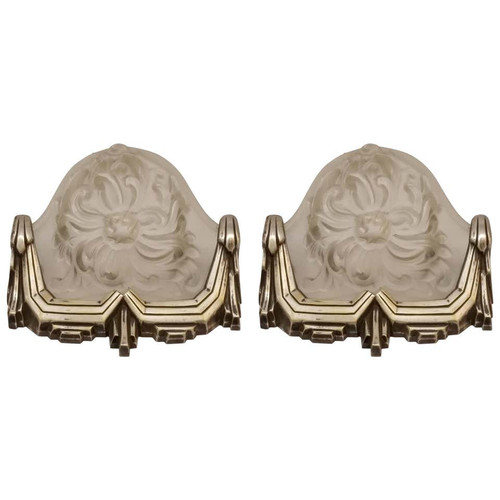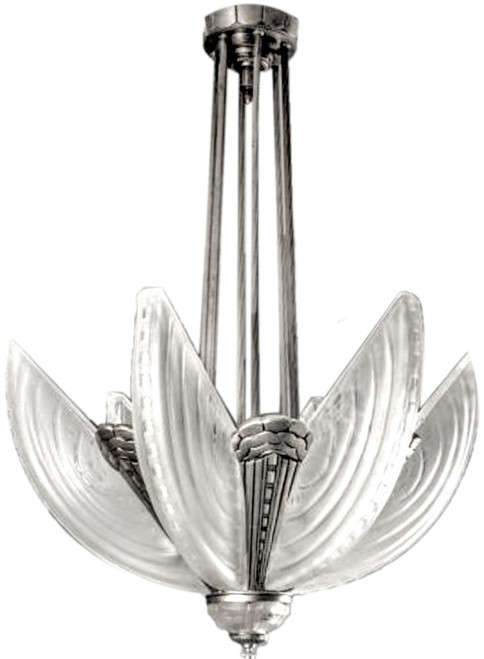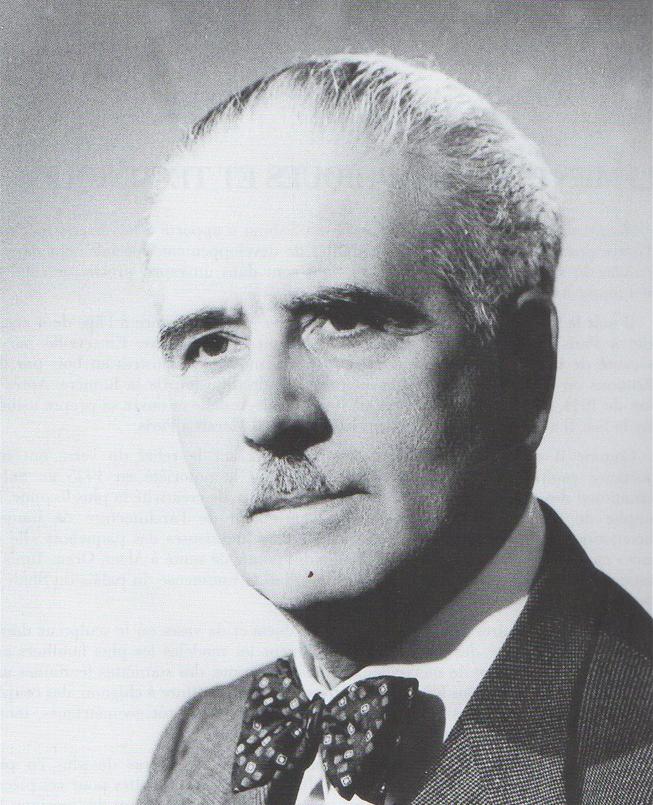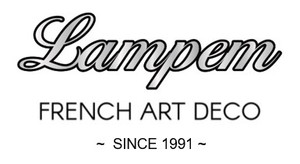-

French Art Deco Lamp Signed by Sabino
$6,850.00 -

-

-

-

-

-

-

-

-

-

-

A Pair of French Art Deco Table Lamps
$18,500.00
Marius-Ernest Sabino

During the 1920s and 1930s there were a large number of glass artisans, among them René Lalique, Marius-Ernest Sabino, Etling, Hunebelle, D'Avesn, Verlys and Jobling. Of these Marius-Ernest Sabino emerged as one of the most prolific.
Master glazier Marius-Ernest Sabino was both an artist and industrialist whose work has influenced the art of modern glassmaking. During the interwar period his technique of compression-molded glass was among the best of the different glassmaking techniques developed during that period. He won numerous prizes in Europe for his art and was awarded the highest decoration in France, the National Order of the Legion of Honor, for his contributions to French art and industry.
Sabino was born on September 9, 1878 in Acireale in Sicily and came to France at the age of four. In Paris he studied woodcarving, following in his father's footsteps. He went on to study at L'Ecole Nationale des Arts Decoratifs et de Beaux Arts (the National School of Decorative and Fine Arts) in Paris. Fascinated by the novelty of electricity, he replaced his first models of wooden chandeliers with pieces where glass became the main element of light diffusion. After the war , he worked with a glazier from Romilly-sur -Andelle in 1914 and then proceeded to open his own factory in Noisy-le-Sec with large stores in the Marais district in Paris.
As a sculptor in training, Sabino focused on experimenting with glass relief. He gained notoriety in 1925 at the International Exhibition of Decorative Arts in Paris. This was his most fruitful year. The success of his chandeliers coincided with the movement towards light- themed architecture of the time. Sabino was sought out to create decorative lighting for ocean liners including the S.S. Ile de France in 1927 and the S.S. Normandie in 1935. His business expanded and he opened new outlets in Algiers, Oran, Tunis and Constantinople. In 1935, his celebrity led to a commission to create all the electric light fittings and chandeliers for the palace of the Shah of Persia.


In addition to lighting, Sabino created a wealth of figurines, vases and other decorative objects. He favored the crystal iridescent blue, called "golden glass" in Britain. This opalescence, which he achieved by adding arsenic, was later expanded to include shades of purple and yellow.
On a typical day, Sabino would give instruction to a draftsman and sculptor who worked with him. The cast glass was then subcontracted out. The finish of the parts was controlled for quality at the plant in Noisy-le-Sec. When the signature was not provided in the same mold, two workers were responsible for this work. This explains the variations in the appearance of his signature on some pieces.
The models that met with the most success were made before 1939 because the Germans closed his glass plants during the war. Some pieces were cast in metal alloy during this time. After the war, he left the business due to illness and his work was continued by his artistic and commercial directors. His molds were no longer used but production continued until 1975, well after his death in 1961 at the age of 83. However, pieces bearing his name continued to be made after this period. The molds were sold to an American company that continues to manufacture in France. Such pieces are identified by the label below.

